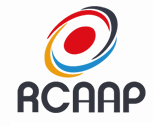Use of near-infrared spectroscopy for prediction of chemical composition of Tifton 85 grass
DOI:
https://doi.org/10.5433/1679-0359.2021v42n3p1287Keywords:
Cynodon spp, Hay. Leaf blade, NIRS, Protein.Abstract
The reduction in the quality, consumption, and digestibility of forage can cause a decrease in animal performance, resulting in losses to the rural producer. Thus, it is important to monitor these characteristics in forage plants to devise strategies or practices that optimize production systems. The aim of this study was to develop and validate prediction models using near-infrared spectroscopy (NIRS) to determine the chemical composition of Tifton 85 grass. Samples of green grass, its morphological structures (whole plant, leaf blade, stem + sheath, and senescent material) and hay, totaling 105 samples were used. Conventional chemical analysis was performed to determine the content of oven-dried samples (ODS), mineral matter (MM), crude protein (CP), neutral detergent fiber (NDF), acid detergent fiber (ADF), acid detergent lignin (ADL), cellulose (CEL), hemicellulose (HEM), and in vitro dry matter digestibility (IVDMD). Subsequently, all the samples were scanned using a Vis-NIR spectrometer to collect spectral data. Principal component analysis (PCA) was applied to the data set, and modified partial least squares was used to correlate reference values to spectral data. The coefficients of determination (R2) were 0.74, 0.85, 0.98, 0.75, 0.85, 0.71, 0.82, 0.77, and 0.93, and the ratio of performance deviations (RPD) obtained were 1.99, 2.71, 6.46, 2.05, 2.58, 3.84, 1.86, 2.35, 2.09, and 3.84 for ODS, MM, CP, NDF, ADF, ADL, CEL, HEM, and IVDMD, respectively. The prediction models obtained, in general, were considered to be of excellent quality, and demonstrated that the determination of the chemical composition of Tifton 85 grass can be performed using NIRS technology, replacing conventional analysis.Downloads
References
Almeida, M. T. C., Delphino, T. R., Paschoalotto, J. R., Carvalho, V. B., Perez, H. L., D'Aurea, E. M. O.,… Ezequiel, J. M. B. (2018). Predições da espectroscopia no infravermelho próximo podem determinar a digestibilidade e o consumo alimentar de cordeiros confinados. Arquivo Brasileiro de Medicina Veterinária e Zootecnia, 70(2), 597-605. doi: 10.1590/1678-4162-9548
Andueza, D., Picard, F., Marin-Rosset, W., & Aufrère, J. (2016). Near-infrared Spectroscopy calibrations performed on over-dried green forages for the prediction of chemical composition and nutritive value of preserved forage for ruminants. Applied Spectroscopy, 70(8), 1321-1327. doi: 10.1177/000370281665 4056
Arzani, H., Sanaei, A., Barker, A. V., Ghafari, S., & Motamedi, J. (2015). Estimating nitrogen and acid detergent fiber contents of grass species using Near Infrared Reflectance Spectroscopy (NIRS). Journal of Rangeland Science, 5(4), 260-268.
Brogna, N., Palmonari, A., Canestrari, G., Mammi, L., Dal Prà, A., & Formigoni, A. (2018). Technical note: near infrared reflectance spectroscopy to predict fecal indigestible neutral detergent fiber for dairy cows. Journal of Dairy Science, 101(2), 1-6. doi: 10.3168/jds.2017-13319
Decruyenaere, V., Lecomte, P., Demarquilly, C., Aufrere, J., Dardenn, P., Stilmant, D., & Buldgen, A. (2009). Evaluation of green forage intake and digestibility in ruminants using near infrared reflectance spectroscopy (NIRS): Developing a global calibration. Animal Feed Science Technology, 148(2-4), 138-156. doi: 10.1016/j.anifeedsci.2008.03.007
Deepa, K., Senthilkumar, S., Kalpana, K., Suganya, T., Sasikimar, P., Thirumalaisamy, G.,… Vasanthakumar, P. (2016). NIRS in animal sciences. International Journal Science, 5(2), 605-610.
Detmann, E., Souza, M. A., Valadares, S. C., Fº., Queiroz, A. C., Berchielli, T. T., Saliba, E. O. S.,... Azevedo, J. A. G. (2012). Métodos para análise de alimentos. Visconde do Rio Branco, MG: UFV.
Fekadu, D., Bediye, S., Kehaliw, A., Daba, T., Kitaw, G., & Assefa, G. (2010). Near Infrared Reflectance Spectroscopy (NIRS) for determination of chemical entities of natural pasture from Ethiopia. Agriculture and Biology Journal of North America, 1(5), 919-922. doi: 10.5251/abjna.2010.1.5.919.922
Fonseca, D. M., & Martuscello, J. A. (2010). Plantas forrageiras. Viçosa, MG: Ed. UFV.
Goldshleger, N., Chudnovsky, A., & Ben-Binyam, R. (2013). Predicting salinity in tomato using soil reflectance spectra. International Journal of Remote Sensing, 34(17), 6079-6093. doi: 10.1080/014311 61.2013.793859
Gontijo, M. M., Neto, Simeone, M. L. F., & Guimarães, C. C. (2012). Predição do teor de proteína bruta em biomassa de capins braquiária por meio de espectroscopia NIR. (Comunicado Técnico, 205). Sete Lagoas: EMBRAPA.
Guerra, G. L. (2019). Espectroscopia de infravermelho próximo na avaliação da qualidade nutricional de Brachiaria brizantha cultivada em diferentes tipos de solo. Tese de doutorado, Universidade Estadual de Londrina, Londrina, PR, Brasil. Recuperado de http://www.bibliotecadigital.uel.br
Kennard, R. W., & Stone, L. A. (1969). Computer aided design of experiments. Technometrics, 11(1), 137-148. doi: 10.2307/1266770
Kragten, S. A., & Wyss, U. (2014). Les fourrages à la lumière de proche infrarouge (NIRS). Recherche Agronomique Suisse, 5(5), 204-211.
Lobos, I., Gou, P., Hube, R., Saldaña, R., & Alfaro, M. (2013). Evaluation of potencial NIRS to predict pastures nutritive value. Journal of Soil Science and Plant Nutrition, 13(2), 463-468. doi: 10.4067/S0 718-95162013005000036
Lohumi, S., Lee, S., Lee, H., & Cho, B. (2015). A review of vibrational spectroscopic techniques for the detection of food authenticity and adulteration. Trends in Food Science & Technology, 46(1), 85-96. doi: 10.1016/j.tifs.2015.08.003
Molano, L. M., Cortés, M. L., Ávila, P., Martens, S. D., & Muñoz, L. S. (2016). Ecuaciones de calibración en espectroscopía de reflectancia en el infrarrojo cercano (NIRS) para predicción de parámetros nutritivos en forrajes tropicales. Tropical Grasslands, 4(3), 106-107. doi: 10.17138/TGFT(4)139-145
Muñiz, G. I. B., Magalhães, W. L. E., Carneiro, M. E., & Viana, L. C. (2012). Fundamentos e estado da arte da espectroscopia no infravermelho próximo no setor de base florestal. Ciência Florestal, 22(4), 865-875. doi: 10.5902/198050987567
Nitsche, P. R., Caramori, P. H., Ricce, W. S., & Pinto, L. F. D. (2019). Atlas climático do estado do Paraná. Londrina, PR: IAPAR. Recuperado de http://www.idrparana.pr.gov.br/Pagina/Atlas-Climatico
Oliveira, D. M. (2017). Análise de forragens por espectroscopia no infravermelho próximo, espectroscopia de emissão óptica em plasma induzido por laser e fusão de dados. Dissertação de mestrado, Universidade Estadual de Campinas, Campinas, SP, Brasil. Recuperado de http://repositorio.unicamp. br/jspui/handle/REPOSIP/325383
Roberts, C. A., Stuth, J. W., & Flinn, P. (2004). Near-infrared spectroscopy in agriculture. In C. A. Roberts, J. Workman Jr, & J. B. Reeves III (Eds.), Analysis of forages and feedstuffs (pp. 231-267). Wisconsin, WI: Madison.
Roussel, S. (2015). Formation: analyse de données spectroscopiques. Théorie et pratique sur the Unscrambler X®. 1329. Montpellier: Cirad.
Schwanninger, M., Rodrigues, J. C., & Fackler, K. (2011). A review of band assignments in near infrared spectra of wood and wood components. Journal of Near Infrared Spectroscopy, 19(5), 287-308. doi: 10. 1255/jnirs.955
Shenk, J. S., & Westerhaus, M. O. (1991). Population definition, sample selection, and calibration procedures for near infrared reflectance spectroscopy. Crop Science, 31(2), 469-474. doi: 10.2135/ cropsci1991.0011183X003100020049x
Shenk, J. S., & Westerhaus, M. O. (1994). Forage quality, evaluation, and utilization. In G. C. Fahey Jr. (Ed.), The application of near infrared reflectance spectroscopy (NIRS) to forage analysis (pp. 406-449). Wisconsin, WI: Madison.
Tilley, J. M. A., & Terry, R. A. (1963). A two-stage technique for the in vitro digestion of forage crop. Journal British Grassland Society, 18(2), 104-111. doi: 10.1111/j.1365-2494.1963.tb00335.x
Tran, H., Salgado, P., Tillard, E., Dardenne, P., Nguyen, X. T., & Lecomte, P. (2010). "Global" and "local" predictions of dairy diet nutritional quality using near infrared reflectance spectroscopy. Journal of Dairy Science, 93(10), 4961-4975. doi: 10.3168/jds.2008-1893
Van Soest, P. J. (1994). Lignin. In P. J. Van Soest (Ed.), Nutritional ecology of the ruminant (pp. 177-195). Ithaca, NY: Cornell University.
Van Soest, P. J., Robertson, J. B., & Lewis, B. A. (1991). Methods for dietary, neutral detergent fiber, and nonstarch polysaccharides in relation to animal nutrition. Journal of Dairy Science, 74(10), 3583-3597. doi: 10.3168/jds.S0022-0302(91)78551-2
Williams, P. (2014). The RPD statistic: a tutorial note. NIR News, 25(1), 22-23. doi: 10.1255/nirn.1419
Williams, P., Dardenne, P., & Flinn, P. (2017). Tutorial to be included in a report on a near infrared spectroscopy project. Journal of Near Infrared Spectroscopy, 25(2), 85-90. doi: 10.1177/09670335177 02395
Williams, P. C., & Sobering, D. C. (1993). Comparison of commercial near infrared transmittance and reflectance instruments for analysis of whole grains and seeds. Journal of Near Infrared Spectroscopy, 1(1), 25-33. doi: 10.1255/jnirs.3
Williams, P. C., & Sobering, D. C. (1996). How do we do it: a brief summary of the methods we use in developing near-infrared calibrations. In A. M. C. Davies & P. L. Williams (Eds.), Near infrared spectroscopy: the future waves (pp. 185-188). Chichester, UK: NIR Publications.
Windham, W. R., Mertens, D. R., & Barton, F. E. (1989). Protocol for NIRS calibration: sample selection and equation development and validation. In G. C. Marten, J. S. Shenk, & F. E. Barton II (Eds.), Near infrared reflectance spectroscopy (NIRS): analysis of forage quality. (pp. 96-103). Washington, DC: USDA-ARS: Agricultural Handbook.
Yang, Z., Nie, G., Pan, L., Zhang, Y., Huang. L., Ma, X., & Zhang, X. (2017). Development and validation of near-infrared spectroscopy for the prediction of forage quality parameters in Lolium multiforum. PeerJ Computer Science, 5(10), 1-20. doi: 10.7717/peerj.3867
Downloads
Published
How to Cite
Issue
Section
License
Copyright (c) 2021 Semina: Ciências Agrárias

This work is licensed under a Creative Commons Attribution-NonCommercial 4.0 International License.
Semina: Ciências Agrárias adopts the CC-BY-NC license for its publications, the copyright being held by the author, in cases of republication we recommend that authors indicate first publication in this journal.
This license allows you to copy and redistribute the material in any medium or format, remix, transform and develop the material, as long as it is not for commercial purposes. And due credit must be given to the creator.
The opinions expressed by the authors of the articles are their sole responsibility.
The magazine reserves the right to make normative, orthographic and grammatical changes to the originals in order to maintain the cultured standard of the language and the credibility of the vehicle. However, it will respect the writing style of the authors. Changes, corrections or suggestions of a conceptual nature will be sent to the authors when necessary.


















